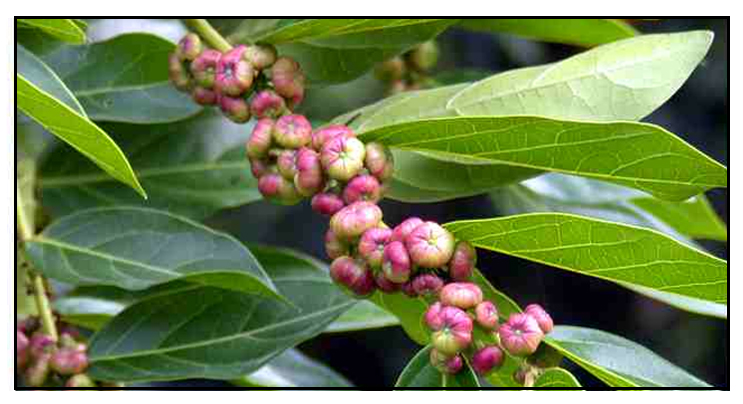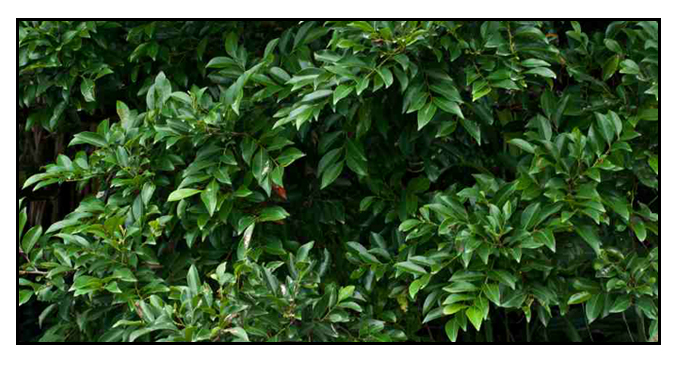 Botany Botany
Bagnang-pula is a shrub or small tree, 2 to 6 meters high. Branches are terete, gray, lenticellate. Branchlets are angular, glabrous or sparsely pubescent when young. Stipules are triangular, about 1 millimeters; petiole 1.5 to 4 millimeters. Leaf blade is ovate, elliptic, oblong or oblong-lanceolate, 5 to 13 centimeters long and 2.4 to 5 centimeters wide, papery to submembranous, glabrous, base acute to obtuse, inequilateral, with 5 to 6 pairs of lateral veins. Flowers are greenish to yellowish whitish, axillary, sessile, with linear bracts at the base. Sepals are 6, free, glabrous on both surfaces. Fruits are lobed around seeds, circular, flattened, depressed above, Capsules are depressed globose, 3.5 to 4 by 6 to 10 millimeters, red, always hairy. Seeds are orange to red, 3.8 to 4 by 3.3 to 3.8 millimeters. (2) (3)
 Distribution Distribution
- In the Philippines, found in creek banks, open grasslands, roadsides and scrublands.
- Planted as ornamental tree, hedge or living fence.
- Native to Southeast Asia. Found in Taiwan, [Cambodia, India, Indonesia, Japan, Malaysia, Myanmar, Singapore, Thailand, Vietnam.
Constituents
- Methanol extract of leaves yielded four new compounds i.e., (−)-isolariciresinol 2a-O-β-d-glucopyranoside (1), (7R,8S)- and (7R,8R)-4,7,9,9′-tetrahydroxy-3,3′-dimethoxy-8-O-4′-neolignan 7-O-β-d-glucopyranosides (2 and 3, respectively), and tachioside 2′-O-4″-O-methylgallate (4). (see studies below) (7)
- Study isolated aqueous acetone homogenate of dried leaves yielded three hydrolyzable tannins, glochiin M1. glochiin M2, and glochiin C1—the first two are gallates of phorogucinol glucoside, the third is a complex tannin.
Properties
Studies have suggested antioxidant, anti-inflammatory, AGE inhibitory properties.
Parts used
Leaves, stems.
Uses
Folkloric
- No reported folkloric medicinal use in the Philippines.
- Used for skin complaints.
- In China, macerated leaves used in the treatment of hemorrhoids. (5)
- In Vietnam, used for hemorrhoid; effect attributed to tannins.
- In Borneo, fresh leaves with water boiled inside a bamboo tank, drunk to treat blood in feces.
(6)
- In Fiji and Taiwan, used for stomach disorders. (9)
Other ands
• Wood: Use for firewood and charcoal.
Studies
• Lignan and Neolignan Glucosides / Leaves: A methanol extract of leaves yielded thirteen compounds, four of them new and elucidated as (−)-isolariciresinol 2a-O-β-d-glucopyranoside (1), (7R,8S)- and (7R,8R)-4,7,9,9′-tetrahydroxy-3,3′-dimethoxy-8-O-4′-neolignan 7-O-β-d-glucopyranosides (2 and 3, respectively), and tachioside 2′-O-4″-O-methylgallate (4). (7)
• Antioxidant: / Anti-Inflammatory: Study evaluated the antioxidant and anti-inflammatory activity of 15 medicinal plants. Glochidion rubrum exhibited the best antioxidant activity, with its higher content of polyphenols and flavonoids. In addition, G. rubrum demonstrated the strongest inhibitory effect (93.7%) in LPS-activated RAW264.7 cell. (8)
• Anti-Glycation End Products (AGE) Inhibition / Twigs: Study evaluated 80 Vietnamese herbal medicines for in vitro inhibition advanced glycation end products (AGEs) formation inhibitory activity, Ten herbal medicines, which included Clochidion rubrum twigs, showed significant AGEs formation inhibitory activity with IC50s <5 µg/mL, approximately 16-31 fold more than positive control, aminoguanidine (IC50 76.47 µg/ml). (10).
Availability
Wild-crafted.
|

![]()





